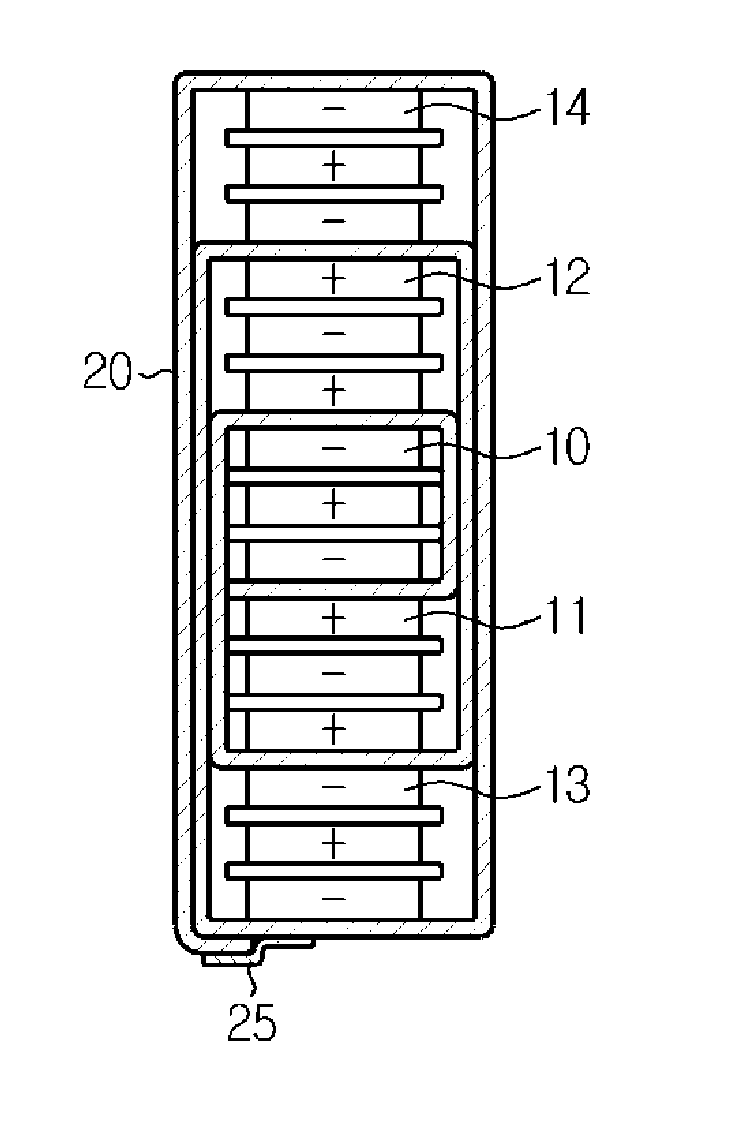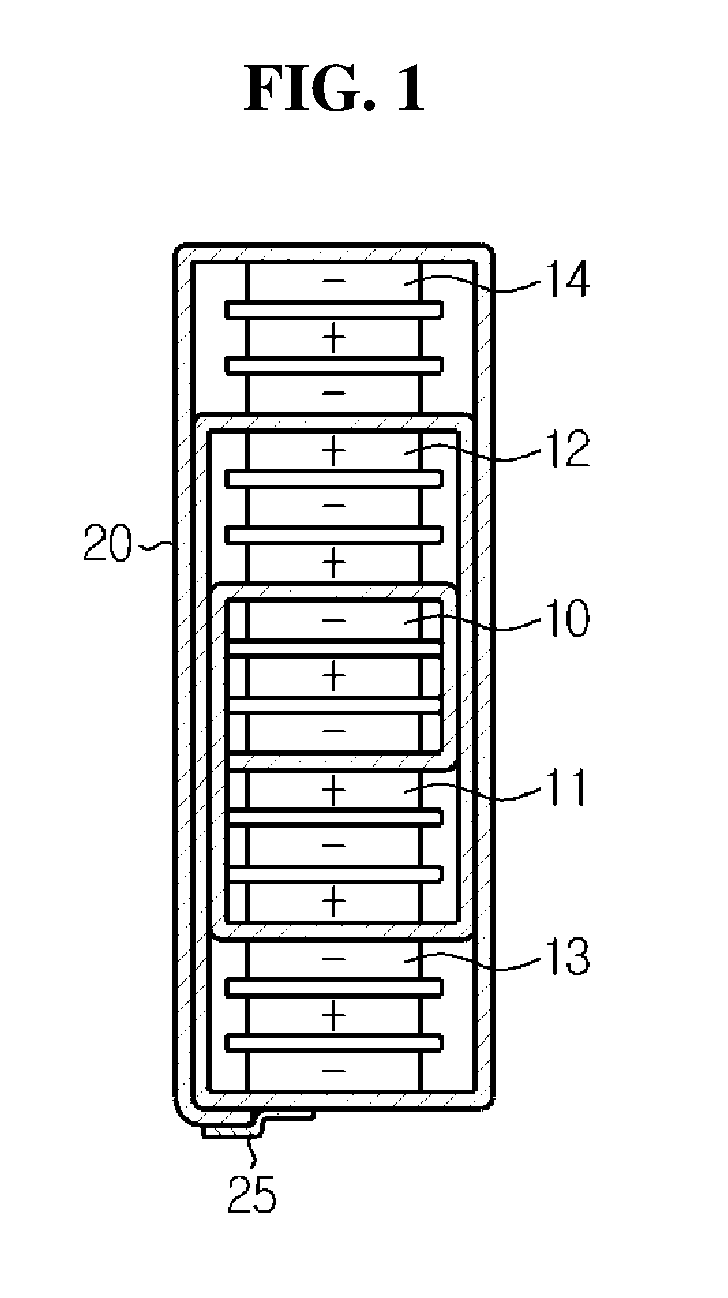Stack-folding type electrode assembly and method of manufacturing the same
a technology of type electrode and assembly, which is applied in the manufacture of secondary cells, battery devices, final product manufacturing, etc., can solve the problems of low spatial utilization, short circuit, and release of active materials of electrodes, so as to reduce the number of folding, reduce the dimensional allowance and defect ratio of folding, and reduce the lamination and folding process time
- Summary
- Abstract
- Description
- Claims
- Application Information
AI Technical Summary
Benefits of technology
Problems solved by technology
Method used
Image
Examples
Embodiment Construction
[0049]Hereinafter, preferred embodiments of the present disclosure will be described in detail with reference to the accompanying drawings. Prior to the description, it should be understood that the terms used in the specification and the appended claims should not be construed as limited to general and dictionary meanings, but interpreted based on the meanings and concepts corresponding to technical aspects of the present disclosure on the basis of the principle that the inventor is allowed to define terms appropriately for the best explanation.
[0050]It should be further understood that batteries or electrode assemblies covered by the present disclosure include, without limitation to a particular type, all various types, for example, a stack-folding type electrode assembly having a plurality of stack type unit cells wound with a folding separator sheet tailored in a long shape and a Z-type stack electrode assembly having stack type unit cells wound with a folding separator sheet by...
PUM
| Property | Measurement | Unit |
|---|---|---|
| melting point | aaaaa | aaaaa |
| melting point | aaaaa | aaaaa |
| melting point | aaaaa | aaaaa |
Abstract
Description
Claims
Application Information
 Login to View More
Login to View More - R&D
- Intellectual Property
- Life Sciences
- Materials
- Tech Scout
- Unparalleled Data Quality
- Higher Quality Content
- 60% Fewer Hallucinations
Browse by: Latest US Patents, China's latest patents, Technical Efficacy Thesaurus, Application Domain, Technology Topic, Popular Technical Reports.
© 2025 PatSnap. All rights reserved.Legal|Privacy policy|Modern Slavery Act Transparency Statement|Sitemap|About US| Contact US: help@patsnap.com



